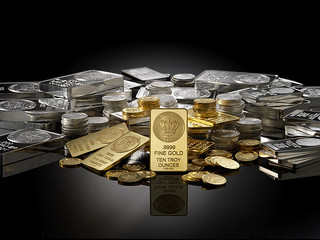If you are an investor then you should learn to identify the difference between index funds and Exchange Traded Funds, or ETFs. Index funds are mutual funds that track the movement of a market index, such as the S&P 500. This allows investors to buy a portion of dozens or even hundreds of shares without having to maintain shares of each individual stock. In other words, it is a quick and easy way to diversify your holdings and invest in what the market does.
Both of these types of investments allow investors to purchase a wide variety of companies in one easy to manage investment. There are many index funds and ETFs that follow a number of different markets, from the entire stock market, to a commodity market, to a specific foreign nation’s market.
When you make a sale or purchase of an index fund, your transaction occurs at the NAV (price) at the end of the day. ETFs are investment funds that are traded like stocks. However, unlike mutual funds, they can be traded any time during the trading day and the NAV is effective at the time of the trade. This can make a big difference when there is a major swing in the markets. But it usually doesn’t make a big difference when all is said and done.
But for basic investors who want to buy a total market index, which is better option, index funds or ETFs?
Primary Differences Between Index Funds & ETFs
Hare are the The primary differences are these:
- Trading: ETFs are brought and sold during the day; index funds, at the end of the day. ETFs are more flexible, but this shouldn’t be a primary concern for long-term investors.
- Costs: ETF expense ratios are generally cheaper, but not always. Be sure to read the fine print before making investment decisions. Since ETFs are traded like stocks, you’ll need to buy shares through a brokerage, and you’ll incur a commission with each trade. This commission may be $0 at certain discount brokerages, such as E*Trade, which offers over 80 commission free ETFs. Learn how to buy shares through E*trade.
- Minimum Investment: ETFs have no minimum investment. Index funds may have minimum investments of a $1,000 or even more. Some of the premium index funds may require an investment of more than $10,000. The minimum investment requirements are usually lower for retirement accounts.
- Pricing: ETFs are, again, like stocks. There is a bid-ask spread that marks the difference between the price that buyers are offering (bid) and the price that sellers are offering (spread), which is higher than the bid. When a transaction occurs, the buyer and seller split the difference. The bid-ask spread, then, generates a hidden cost that index funds don’t incur. (There is also a risk that an ETF trades at a premium or discount to its net asset value due to market forces, but arbitrage mechanisms – traders who notice this difference and will trade to profit from the discrepancy – usually bring the price back in line with the NAV.)
- Dividend Reinvestment: It’s easy to reinvest dividends in an index fund. However, it isn’t do this with an ETF. Some stock brokers feature automatic Dividend Reinvestment Plans (DRIPs), but others don’t. If your brokerage features DRIPS, you may be able to reinvest your dividends without an additional transaction fee. Otherwise, you may have to pay to reinvest your dividends.
- Taxes: Some ETFs are more tax efficient than index funds. You’ll still have to pay taxes on dividends and capital gains, but you have control over the timing of the capital gains distribution. With index funds, when any shareholder liquidates his stake, fund managers will have to sell shares to raise the money. This generates recognized gains, which are distributed on to the remaining fundholders, who will have to pay taxes on the gains. ETFs also have the added advantage of being able to trade stocks through “in-kind” transactions, which allow them to rebalance their portfolios without incurring capital gains on those transactions.
Index Funds Vs ETFs – Verdict:
Depending on your trading habits, ETFs may be the better bet as long as the commissions aren’t too high. ETFs are easier to trade, generally have lower expense ratios, do not have minimum investment requirements, and are often more tax efficient. If you invest through a discount brokerage or only buy ETFs that don’t have transaction fees, you can generally come out ahead over the long run. But if you invest on a monthly schedule, then you might want to consider a mutual fund, which generally won’t have any associated transaction fees.
Here is the most important thing to remember: index funds and ETFs are both great ways to diversify quickly and cheaply, and the sooner you start, the more you’ll gain.

